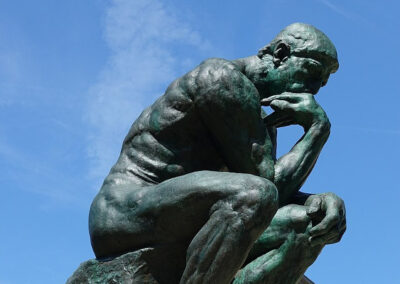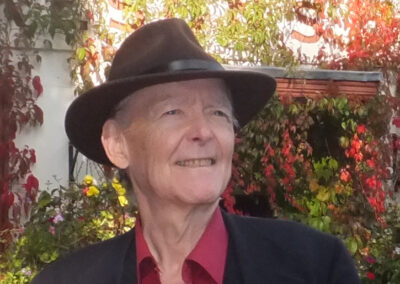It is a strongly held view of many people that there is no such thing as an Afterlife: all we have is here in earth and when we die, it is curtains on any existence we can have. To someone postulating this, and it is usually with confidence, the question can be put: ‘How do you know?’ It is unlikely to elicit from the sceptically minded anything resembling a proof.
This is just one area where balanced views should not necessarily be intuitive but science-led.
The doubters may be right though their non-faith also may be akin to an article of faith. The sceptics are entitled to receive a dose of their own medicine, and be challenged. It cannot be acceptable to claim that anything for which there is no evidence cannot be true – though admittedly this argument also can be used to justify blind faith.
There are innumerable studies to show that there is a correlation between the physical body and mental condition. Physical happenings within the body result from, and cause, a change in mental attitude. This is not surprising at one level. One has only to consider the effect on a testosterone-fuelled youth ogling a can-can dance in the Lido as compared with that on a greybeard, however lecherous.
The way in which science should impact on a far wider spectrum of situations and beliefs should be a focus of interest to any thinking person. Galileo handed his inquisition interrogators a telescope and said ‘Look Through That!’. They did not, and we ridicule their purblind attitude. Let us not fall into the same trap. We should make this journey without knowing in advance which parts of our beliefs may be buttressed by our discoveries, and which turn out to be just plain wrong, little as we may want to admit it.
Are powerful unseen Forces hedged around us that might have a scientific cause, as yet unattributed, and which act on people in ways that we cannot accurately identify let alone define; or whether ‘human’ emotions are not exclusively ours but part of the natural order of the cosmos? What is to be found when microscope or telescope are turned onto a previously ‘Unseen World’?
It is a powerful word – ‘pseudo-science’. The moment we see it, we are inclined to look with a jaundiced eye on whatever might be the finding of committed people that go against the grain of our pet beliefs. Persuasive books and tracts have been written to debunk the basis of ideas about the some of the ways that the mind and the body might interact. Telepathy, clairvoyance, the beneficial intercession of healers, out-of-body experiences, the spirit world in general and the gamut of such possibilities, are examples of what is sometimes seen as ‘pseudo-science’, metaphysics or even ‘old wives’ tales’. A forensic tour-de-force of this landscape of what might be called ‘Wishful Thinking’ is to be found in ‘Why People Believe Weird Things’ subtitled ‘Pseudoscience, superstition and other confusions of our time‘ by Michael Shermer, published by W,H, Freeman and Company of New York. Many ‘proofs’ of phenomena are taken apart in Shermer’s work and the attitudes of mind that lead even scientists let alone the lay public into delusive ideas and faulty thinking are gone into in a detail that might satisfy the most hardened sceptic. Shermer is not alone.
Is there a baby in the bathwater? The rejectionist position regarding almost all that might be said to emanate from the intangible world is arguably – or controversially – to belittle at least some of the results of recent scientific experimentation under stringent laboratory conditions. If for instance the interaction of minds acting at a distance on one another is admitted as a respectable, tenable hypothesis – while admitting that very little in life is 100% certain – much that was hitherto questionable supposition about ‘the unseen world’ becomes increasingly grounded in territory that may be described as hard reality.







